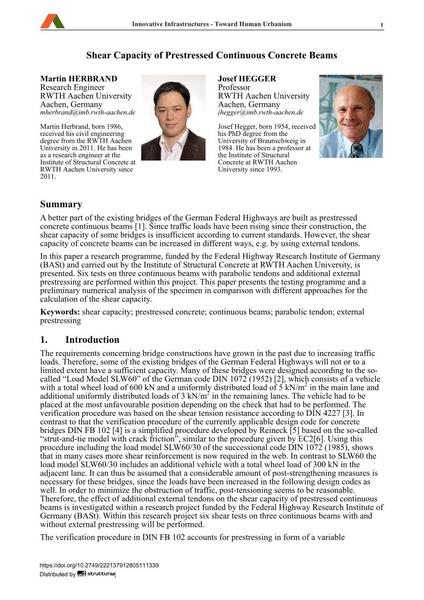Shear Capacity of Prestressed Continuous Concrete Beams

|
|
|||||||||||
Bibliografische Angaben
| Autor(en): |
Martin Herbrand
Josef Hegger |
||||
|---|---|---|---|---|---|
| Medium: | Tagungsbeitrag | ||||
| Sprache(n): | Englisch | ||||
| Tagung: | 18th IABSE Congress: Innovative Infrastructures – Towards Human Urbanism, Seoul, Korea, 19-21 September 2012 | ||||
| Veröffentlicht in: | IABSE Congress Seoul 2012 | ||||
|
|||||
| Seite(n): | 959-965 | ||||
| Anzahl der Seiten (im PDF): | 7 | ||||
| DOI: | 10.2749/222137912805111339 | ||||
| Abstrakt: |
A better part of the existing bridges of the German Federal Highways are built as prestressed concrete continuous beams [1]. Since traffic loads have been rising since their construction, the shear capacity of some bridges is insufficient according to current standards. However, the shear capacity of concrete beams can be increased in different ways, e.g. by using external tendons. In this paper a research programme, funded by the Federal Highway Research Institute of Germany (BASt) and carried out by the Institute of Structural Concrete at RWTH Aachen University, is presented. Six tests on three continuous beams with parabolic tendons and additional external prestressing are performed within this project. This paper presents the testing programme and a preliminary numerical analysis of the specimen in comparison with different approaches for the calculation of the shear capacity. |
||||
| Stichwörter: |
externe Vorspannung Schubtragfähigkeit Durchlaufträger
|
||||
